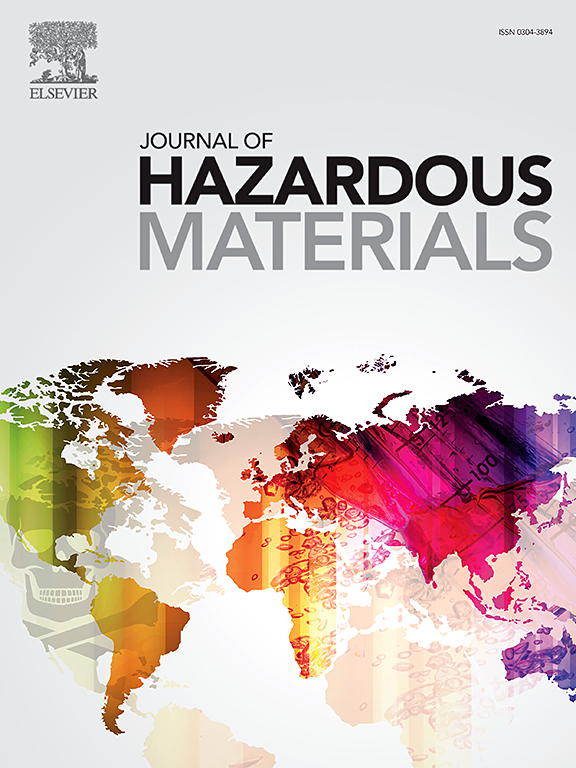Mechanistic Insights into Redox-Driven Formation, transformation and Stability of Fe-HA-Cd Nanocolloids at Particle–Water Interfaces
IF 11.3
1区 环境科学与生态学
Q1 ENGINEERING, ENVIRONMENTAL
引用次数: 0
Abstract
Natural organic matter (NOM) colloids are frequently encountered at the anoxic-oxic interface in subsurface environments. Their surface-rich functional groups and redox capacity exert a significant influence on the fate and transport of Fe and Cd in aquatic systems. The present study demonstrated that stable Fe-HA-Cd colloids formed in both anoxic and oxic environments, with hydrodynamic diameters stabilized at 97.4-134.5

氧化还原驱动Fe-HA-Cd纳米胶体在颗粒-水界面形成、转变和稳定性的机理研究
在地下环境中,天然有机质(NOM)胶体经常出现在缺氧-缺氧界面。它们的表面富官能团和氧化还原能力对铁和镉在水生系统中的命运和运输有重要影响。本研究表明,在缺氧和缺氧环境下均能形成稳定的Fe-HA-Cd胶体,在HA浓度为64.3mg /L时,其水动力直径稳定在97.4-134.5nm。Fe的掺入在一定程度上促进了HA表面Cd胶体的形成。然而,在缺氧和缺氧条件下高浓度的Fe(II) (C/Fe< 22.4)和Fe(III) (C/Fe<7.0)分别通过竞争吸附和共沉淀抑制了Cd胶体的形成。此外,Fe(II)- hare -Cd(II)胶体在氧化转化过程中的氧化还原效应导致真正溶解的Cd从胶体颗粒释放到水中。聚集动力学和Derjaguin-Landau-Verwey-Overbeek (DLVO)理论表明,与HA-Cd(II)胶体相比,Fe-HA-Cd胶体降低了颗粒的稳定性。此外,Fe-HA-Cd胶体在聚集过程中的解聚行为在不同条件下表现出可变性,特别是在时间依赖的尺寸效应方面。本研究提供了Fe-HA-Cd胶体在富有机质的缺氧-缺氧环境中形成、氧化转化和稳定性的详细数据。这些发现为了解镉在颗粒态和溶解态之间的分配和环境行为提供了有价值的见解,对了解镉污染和提出有效的修复策略至关重要。
本文章由计算机程序翻译,如有差异,请以英文原文为准。
求助全文
约1分钟内获得全文
求助全文
来源期刊

Journal of Hazardous Materials
工程技术-工程:环境
CiteScore
25.40
自引率
5.90%
发文量
3059
审稿时长
58 days
期刊介绍:
The Journal of Hazardous Materials serves as a global platform for promoting cutting-edge research in the field of Environmental Science and Engineering. Our publication features a wide range of articles, including full-length research papers, review articles, and perspectives, with the aim of enhancing our understanding of the dangers and risks associated with various materials concerning public health and the environment. It is important to note that the term "environmental contaminants" refers specifically to substances that pose hazardous effects through contamination, while excluding those that do not have such impacts on the environment or human health. Moreover, we emphasize the distinction between wastes and hazardous materials in order to provide further clarity on the scope of the journal. We have a keen interest in exploring specific compounds and microbial agents that have adverse effects on the environment.
 求助内容:
求助内容: 应助结果提醒方式:
应助结果提醒方式:


